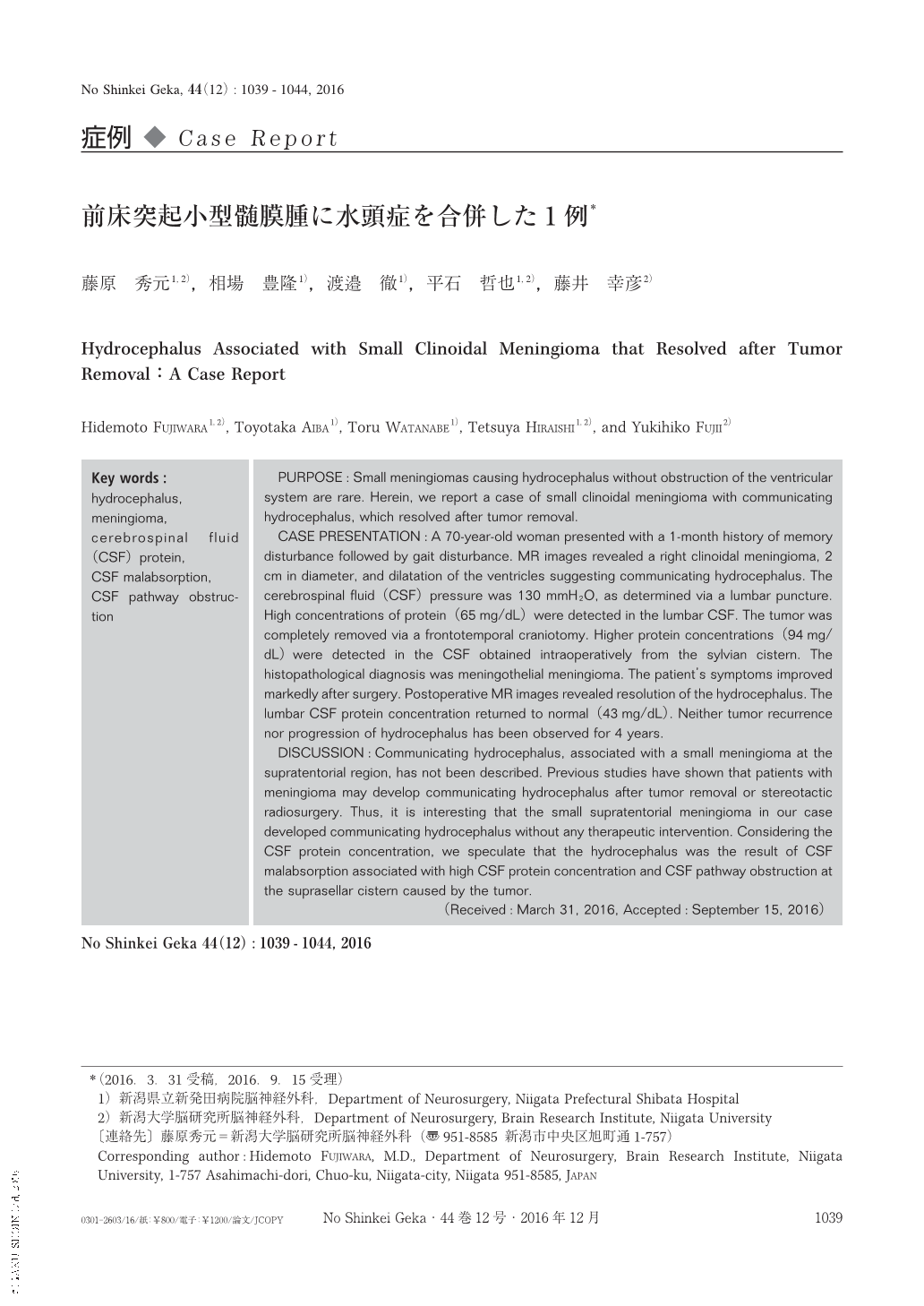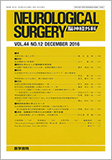Japanese
English
- 有料閲覧
- Abstract 文献概要
- 1ページ目 Look Inside
- 参考文献 Reference
Ⅰ.はじめに
脳室系の閉塞機転を伴わない小型の髄膜腫に水頭症を合併することは稀である.今回われわれは,比較的小さな前床突起髄膜腫に水頭症を合併し,腫瘍摘出により水頭症が改善した1例を経験した.水頭症の成因を含め文献的考察を加え報告する.
PURPOSE:Small meningiomas causing hydrocephalus without obstruction of the ventricular system are rare. Herein, we report a case of small clinoidal meningioma with communicating hydrocephalus, which resolved after tumor removal.
CASE PRESENTATION:A 70-year-old woman presented with a 1-month history of memory disturbance followed by gait disturbance. MR images revealed a right clinoidal meningioma, 2 cm in diameter, and dilatation of the ventricles suggesting communicating hydrocephalus. The cerebrospinal fluid(CSF)pressure was 130 mmH2O, as determined via a lumbar puncture. High concentrations of protein(65mg/dL)were detected in the lumbar CSF. The tumor was completely removed via a frontotemporal craniotomy. Higher protein concentrations(94mg/dL)were detected in the CSF obtained intraoperatively from the sylvian cistern. The histopathological diagnosis was meningothelial meningioma. The patient's symptoms improved markedly after surgery. Postoperative MR images revealed resolution of the hydrocephalus. The lumbar CSF protein concentration returned to normal(43mg/dL). Neither tumor recurrence nor progression of hydrocephalus has been observed for 4 years.
DISCUSSION:Communicating hydrocephalus, associated with a small meningioma at the supratentorial region, has not been described. Previous studies have shown that patients with meningioma may develop communicating hydrocephalus after tumor removal or stereotactic radiosurgery. Thus, it is interesting that the small supratentorial meningioma in our case developed communicating hydrocephalus without any therapeutic intervention. Considering the CSF protein concentration, we speculate that the hydrocephalus was the result of CSF malabsorption associated with high CSF protein concentration and CSF pathway obstruction at the suprasellar cistern caused by the tumor.

Copyright © 2016, Igaku-Shoin Ltd. All rights reserved.


